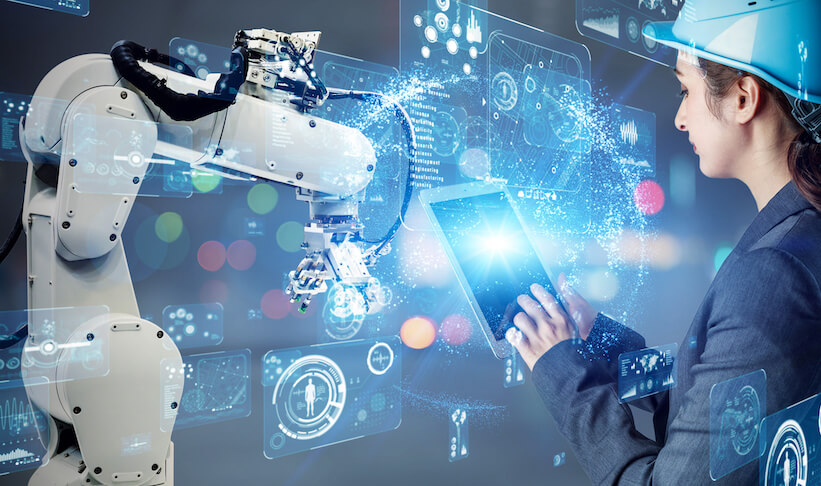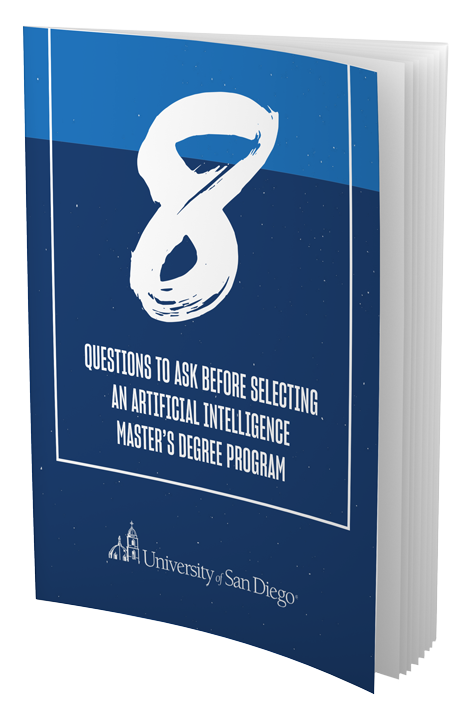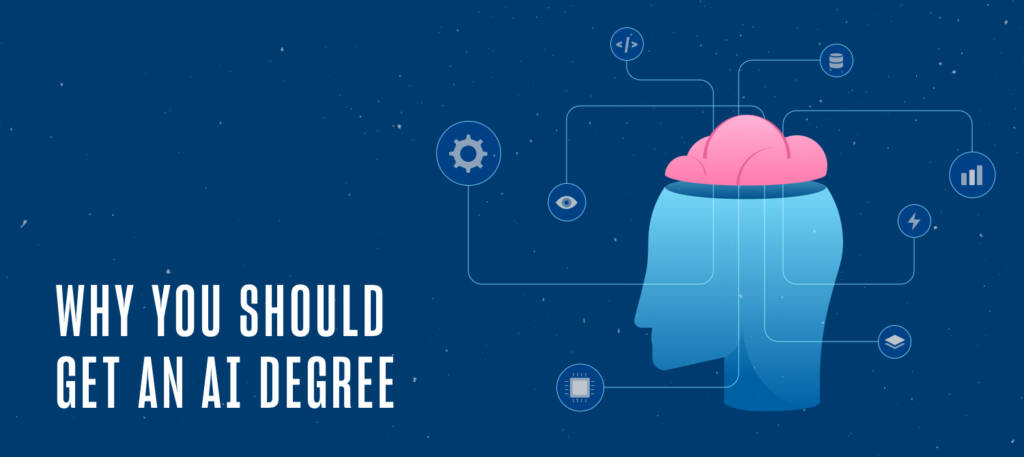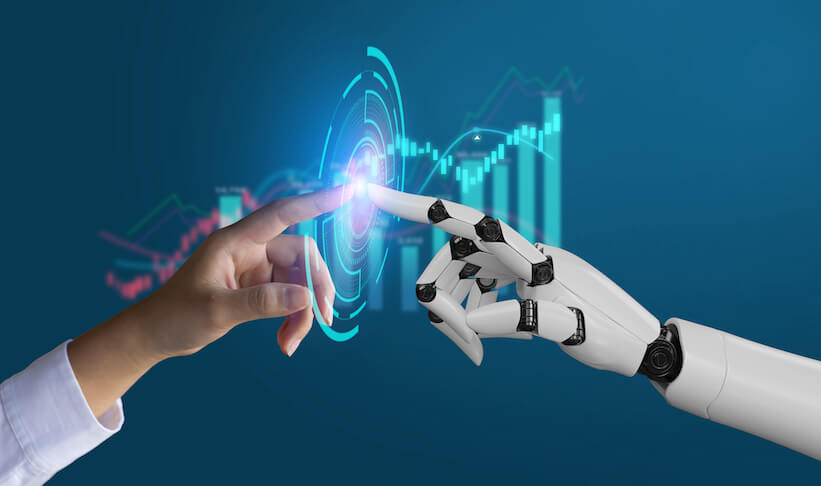The intersection of robotics and artificial intelligence (AI) is quickly becoming a driving force in the creation of new industries, cutting-edge technologies and increased productivity and efficiency in existing sectors. As the field of AI in robotics continues to evolve, its applications in the real world are becoming increasingly apparent.
From self-driving cars, customer service and healthcare, to industrial and service robots, AI is playing a critical role in transforming industries and improving daily life. Although there have been concerns about the potential of AI and robotics to make some aspects of human work obsolete, the World Economic Forum (WEF) predicts that this technology will create 12 million more jobs than it terminates by 2025. This growth presents an opportunity for the retraining and reskilling of the workforce and investment in knowledge that aligns with the latest technologies.
The combination of AI and robotics has the potential to revolutionize work responsibilities across various industries, from automating routine tasks within factories to introducing flexibility and learning capabilities into tedious applications. The potential uses of AI in robotics are vast and varied, making it an exciting field to explore and understand. Read on to learn more about robotics and AI, plus how you can play a role in the future of this important industry.
What Is Robotics?
Robotics is a branch of engineering and computer sciences that includes the design, construction and operation of machines that are capable of performing programmed tasks without additional human involvement. At its core, robotics is about using technology to automate tasks while making them more efficient and safe.
Historically, robots have been used for tasks that are too difficult or dangerous for humans to perform — such as lifting heavy equipment — or for activities that are very repetitive, such as assembling automobiles. By automating these tasks, robotics solutions can enhance productivity and improve safety, freeing up human workers to focus on other more complex and creative endeavors.
It’s also worth noting that robots are not subject to the same limitations as humans. For example, a human doing the same task over and over may become tired, bored or disengaged, but the robot will continue to perform the same task with an unwavering level of efficiency and precision. Robotics solutions are already making a major impact across numerous industries, from meticulously harvesting crops to making deliveries and assembling cars.
Are AI and Robotics the Same Thing?
Although AI and robotics are sometimes used interchangeably, in reality, they are distinct — yet related — fields. While both AI and robotics can potentially impact various industries and aspects of life in significant ways, each serves a different purpose and operates in a unique way.
Simply put, AI neural network models are similar to biological neural networks, while robotics is comparable to the human body. AI refers to the development of systems that can perform tasks that typically require human intelligence, such as learning, problem-solving and decision-making. These systems can work autonomously, without the need for constant instructions, since they’re programmed to learn and adapt on their own.
Robotics, on the other hand, refers to the development of robots that can perform specific physical tasks. These robots can be programmed to carry out simple, repetitive actions, such as sorting items or assembling miniscule parts. While AI can be integrated into robotics to enhance the robot’s capabilities and improve decision-making, it’s not always necessary. Some robotics applications simply require robots to carry out predictable actions without the need for additional cognitive capabilities.
While AI and robotics are not the same things, they do complement each other and can work together to bring about a wide range of benefits and advancements in various applications.
How AI Is Used in Robotics
AI has made substantial progress in recent years, and its integration with robotics has proven to be a natural progression. While AI in robotics is not yet widespread, it’s rapidly gaining momentum as AI systems become more advanced. The combination of AI and robotics holds tremendous potential, leading to increased productivity and efficiency, improved safety and greater flexibility for workers in a variety of professions.
One of the key ways in which AI is used in robotics is through machine learning. This technique enables robots to learn and perform specific tasks through observing and mimicking human actions. AI gives robots a computer vision that enables them to navigate, detect and determine their reactions accordingly. This helps them go beyond simply performing repetitive tasks to become true “cognitive collaborators.”
Another way that AI is used in robotics is through edge computing. AI applications in robotics require the interpretation of massive amounts of data gathered by robot-based sensors in real time, which is why this data is analyzed close to the machine, rather than being sent off to the cloud for processing. This approach provides machines with real-time awareness, enabling robots to act on decisions at a rate much quicker than human capabilities allow.
AI also helps robots learn to perform specific tasks through the use of various sensors, which may include:
- Time-of-flight optical sensors
- Temperature and humidity sensors
- Ultrasonic sensors
- Vibration sensors
- Millimeter-wave sensors
These sensors help robots to learn and adapt, making them more intelligent and better equipped to act and react in different scenarios.
These are just a few of the ways that artificial intelligence is used in conjunction with robotics.
Applications of AI in Robotics
In the world of robotics, AI has proven to be a valuable asset in a variety of applications. From customer service to manufacturing, AI has made its mark and continues to revolutionize the way we think about and interact with robots. Let’s take a closer look at some of the key areas where AI is being used alongside robotics today.
Customer Service: AI-powered chatbots are becoming increasingly common in customer service applications. These automated service agents can handle simple, repetitive requests without the need for human involvement. The more these systems interact with humans, the more they learn. And as AI systems become more sophisticated, we can expect to see more and more robots being used in customer service in both online and brick-and-mortar environments.
Assembly: AI has proven to be an invaluable tool in robotic assembly applications, especially in complex manufacturing industries such as aerospace. With the help of advanced vision systems, AI can enable real-time course correction and can be used to help a robot automatically learn the best paths for certain processes while in operation.
Packaging: AI is used in the packaging industry to improve efficiency, accuracy and cost-effectiveness. By continuously refining and saving certain motions made by robotic systems, AI helps make installing and moving robotic equipment easier for everyone.
Imaging: Across many industries — including assembly and logistics — accurate imaging is crucial. With the assistance of AI, robots can achieve enhanced visual acuity and image recognition competencies, enabling greater accuracy in even the smallest of details.
Machine Learning: Machine learning is a powerful tool for robots. By exploring their surroundings, robots can learn more about their environment, find ways around obstacles and solve problems to complete tasks more efficiently. From home robots like vacuum cleaners to manufacturing robots in factories, machine learning is helping robots become more intelligent and adaptable in their work.
These are just a few of the many applications of AI in robotics today. As these technologies continue to expand and grow in sophistication, it is likely that we will see even more innovative applications in the near future.
What Is a Robotics Engineer?
As robotics continue to shape various industries, a robotics engineer plays a critical role in robotic design, maintenance and functionality. A robotics engineer is a specialist responsible for building, installing and maintaining the machines that perform tasks in sectors such as manufacturing, security, aerospace and healthcare.
The day-to-day responsibilities of a robotics engineer include:
- Installing, repairing and testing equipment and components
- Performing predictive maintenance
- Incorporating relevant technical literature into their understanding of system operations
- Identifying new data sources
- Building working relationships
- Ensuring that software solutions meet customer needs
- Developing and deploying AI governance structure to manage ongoing implementation of AI strategies
- Continuously evaluating and reimagining processes to incorporate conversational AI
- Maintaining knowledge of safety standards and regulations for the safe operation of a system
To become a robotics engineer, a bachelor’s or master’s degree in computer engineering, computer science, electrical engineering or a related field is required. Fluency in multiple programming languages and proficiency in algorithm design and debugging are also important qualifications. A successful robotics engineer is also a continuous learner, a natural problem solver and is driven toward ongoing improvement.
The average salary for a robotics engineer is $100,205* per year, making it a lucrative and in-demand career path for those with the right qualifications and skills.
*Salary average according to Glassdoor as of February 2023.
Future of AI in Robotics
The future of AI in robotics is vast and exciting. The next stage of AI, known as AGI or Artificial General Intelligence, holds the potential to reach levels of true human understanding. The key to this is integrating the computational system of AI with a robot. The robot must possess mobility, senses (such as touch, vision and hearing) and the ability to interact with physical objects, which will enable the system to experience immediate sensory feedback from every action it takes. This feedback loop enables the system to learn and comprehend, bringing it closer to achieving true AGI.
The current focus on AI in robotics is shifting from the question of what tasks robots can perform for people, to what type of input a robot can provide the AI’s “mind.” By allowing AI to explore and experiment with real objects, it will be possible for it to approach a deeper understanding, much like a human child. With this integration of AI and robotics, we can expect to see significant advancements in a wide range of industries, from manufacturing and healthcare to security and space exploration.
The future of AI in robotics is bright and holds the potential for tremendous progress in how we understand and interact with the world. By combining the computational power of AI with the physical capabilities of robots, we are opening up new doors for exploration and innovation, and the potential for true AGI is within reach.
Are you interested in pursuing a career as a robotics engineer? Our Master of Science in Applied Artificial Intelligence may be just the beginning of a worthwhile journey. Check out our informative eBook, 8 Questions to Ask Before Selecting an Applied Artificial Intelligence Master’s Degree, to learn more.




